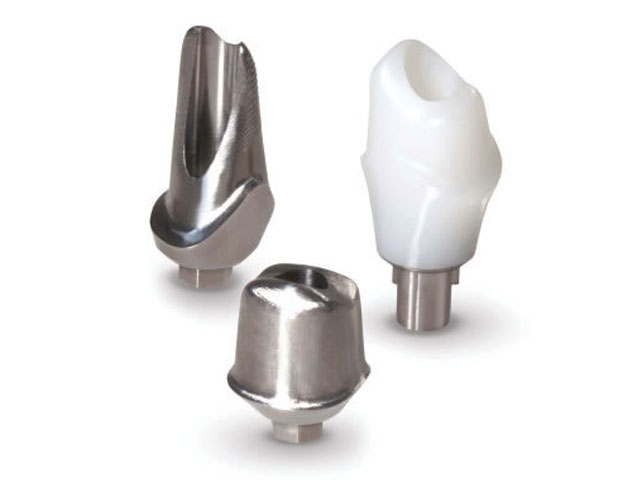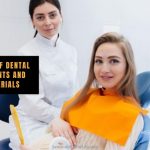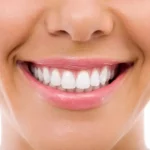
Dental prophylaxis paste contains a special blend of polishing and cleaning agents. Only professional hygienist or dentist is qualified to use dental prophy paste. These professionals are aware of the right concentration of fluoride ion to use for cleaning and polishing your teeth. Titanium is added as a bleaching agent to whiten the paste.
To be exact the inactive substance is known as titanium dioxide or TiO2. Titanium Dioxide is a natural mineral used in the food as coloring. Titanium is also used as a material for sunscreen and cosmetics. There was a time when polishing the teeth to perfection requires the use of a material that has titanium dioxide however, things have changed since then.
What is Titanium?
Titanium or Ti has been used for a very long time in dentistry and in the field of medicine. Titanium is primarily used as a material for dental implants. Titanium is a transition metal that has a radiant finishing. Titanium is silver in color and is highly resistant to corrosion. Titanium dioxide helps dental products resists discoloration.
When it comes to issues regarding toxicity, titanium is generally non-toxic in nature. Titanium is biocompatible meaning your body will not reject it. This explains why Titanium and its alloys are used not just for dental implants but, as a material used for prostheses, abutment, and orthodontic wires.
However, recent issues and concern about nanoscale titanium exposure has come out The primary concern is more about the safety for patients who are exposed to titanium nanoparticles. Recent studies show that ingesting nanoscale titanium can have an effect on your organs these specifically includes:
- Brain
- Heart
- Kidney
- Liver
- Lungs
Other results show how glucose and lipid metabolism was affected when high doses were used. The same studies also showed ruptured and cracked nerve cells resulting in brain inflammation. In effect, the larger nanoparticles produce higher toxicity.
Facts About Titanium Dioxide
- The name titanium was derived from the Titans of Greek mythology. The Titans were gods of the Earth. The Titans were ruled by Cronus, who was later overthrown as its leader by his son Zeus
- Titanium was first discovered in Cornwall by an English clergyman name, William Gregor.
- It was a German chemist name M.H. Klaproth who first identified titanium oxide a few years later after its discovery in Cornwall.
- An alternative name for titanium dioxide is manaccanite, derived from Manaccan. Titanium was discovered in a stream that runs near south of Manaccan.
- The biggest share for titanium use is as a paint pigment. The paint is pigmented using titanium to increase its durability.
Uses of Titanium in Dentistry
- Use as a component for dental prophylaxis paste
Titanium is used as a bleaching agent to whiten the paste. Dental prophylaxis paste that is inorganic in nature is more effective than the use of organic-based toothpaste. Research studies in the field of dentistry came up with prophylaxis paste made of organic thickeners.
Titanium oxide can leave behind a slightly white residue on your teeth. If you look in the mirror after you have your teeth clean it would be easy to identify which teeth have been cleaned. Titanium is an effective fine polishing agent when it is combined with pumice. Titanium can clean and polish the teeth efficiently.
Titanium can be combined with flavors. Your dentist might offer you different prophylaxis paste flavor containing titanium. Some of the interesting flavors are:
- Spearmint
- Cinnamon
- Fruity like berries or a similar fruity flavor
- White Chocolate
- Titanium alloy or Ti-alloy is used on dental implants
This is better known as Grade V binary titanium alloy which has 4% to 6% aluminum and vanadium. However, the dentist needs to be comfortable and efficient in cleaning and treating dental implants. Unfortunately, implants are different and the doctors, surgeons and even implant companies can use different kinds of materials for dental implants. Suffice to say, that extra attention must be given when alloying with Titanium.
Titanium is non-magnetic and will not conduct heat or electricity. This material is solid at room temperature which makes it a good material for implants. However, this can become brittle and more malleable when exposed to a higher temperature. There is also the issue of the aesthetic aspect when using this material. This mineral is grey in color and when applied on the thin mucosa it grows darker in color.
Despite its widespread use as implant biomaterial, titanium alloy could trigger the release of aluminum and vanadium ions. Vanadium ions exhibit high cytotoxic levels while aluminum can induce senile dementia. These metal ions can leach and cause various health issues such as
- Allergies
- Cytotoxic effect
- Neurological disorders
Other drawbacks of using this material for implants include
- Low deformability
- Wear resistance
- High reactivity when exposed to oxygen and nitrogen at elevated temperatures
- Caution and care must be taken when applied for implants due to its ability to travel in the bloodstream
- Titanium is proven to release Titanium ions under certain physiological condition. Research shows the presence of citrate and lactate would increase Titanium levels. Citrate and lactate can assist the binding between Titanium and transferrin. As a result, this does not contribute to the integrity of the Titanium implant.
- Titanium must not stay on the body for a long time, otherwise, some undesirable health problems can arise such as Alzheimer’s disease, osteomalacia, and peripheral neuropathy
However, patients must use Titanium for implants with caution especially if you are.
- On restricted sodium diets
- Have a renal or metabolic disease
- Suffering from Infectious disease
- Using diuretics
- Undergoing long term steroid therapy
- You are a child. Since a child’s body is not mature enough to bear the effects of titanium
Negative Aspect of Titanium
There are some disadvantages of using titanium as an ingredient for prophylaxis paste application and this includes the following:
- Leaves a white residue in cervical and occlusal grooves. This makes it difficult to rinse
- Too sticky
- High splattering effect
- Difficult to rinse off especially when it splatters on clothes
How to Remove Stains From Clothes
When the dentist gets a little exuberant in polishing your teeth some little dots tend to appear in your clothes. Even the protective apron worn during the oral prophylaxis procedure cannot protect the rest of your clothes. It is not simply wiping the polishing stain. There are times when these tiny dots reappear.
Water alone will not clean up the splatter cause by prophylaxis paste that has titanium. There will be stubborn white stains. Even if it looks like the white stains have completely disappeared the stains will reappear. The solution is to use a bit of laundry detergent to break down the stain.
If titanium was used for toothpaste you are better off using a dull knife or the edge of an unused credit card. These methods will effectively lift off the stain away from the surface of the fabric. It is not advisable to rub away since this will only push the toothpaste stains deeper into the fibers. Stains like these are harder to remove.
Is Titanium Safe?
Recent studies have to place titanium dioxide on the spotlight. The main issue is that research shows how titanium dioxide nanoparticles can lead to genetic disorders. On top of this, there is also an additional concern regarding possibly having cancer because of high exposure to titanium dioxide nanoparticles. Children have been discovered to be the recipient of the highest exposure of titanium dioxide. The exposure levels for these kids are twice or even four times than that of adults.
Nanoparticles, as the name implies, is ultramicroscopic in nature. This means titanium dioxide can easily penetrate your skin and travel in your bloodstream. The main concern of these studies is its effect on the brain. No less than the International Agency for Research on Cancer classifies this material as possibly carcinogenic to humans. However, the data is base on animal studies where animals that inhaled a prolonged exposure to high concentrations of titanium dioxide dust showed signs of lung cancer.
The Bottom Line
To successfully allow the use of titanium-based alloys with an ideal property there is still a need for more in-depth research. The main issue has got to do with the toxic effect when used in implants and similar dental applications such as dental prophylaxis paste. Extra care must be employed in every step of the process.
To be fair, titanium offers an excellent option for dental surgery because of how the body accepts it. There is also lower chances of unpleasant allergic reactions although it was mentioned that in higher nanoparticles this changes the perception about the use of titanium. To play safe as mentioned above titanium should be removed in the ingredients mentioned for prophylaxis paste and other dental products. There is no need to mask it by using pleasant tasting flavors. Patients must be given the chance to make a decision whether they would take the risk of using a material with titanium or better yet not. The prognosis is not positive for titanium for now. The message is clear, there is a need to remove titanium at least as a material for dental products.
About The Author:
Dr. D. Epstein is a Pediatric Dentist and owner of Wonderful Dental. He loves to write on dental tips.




